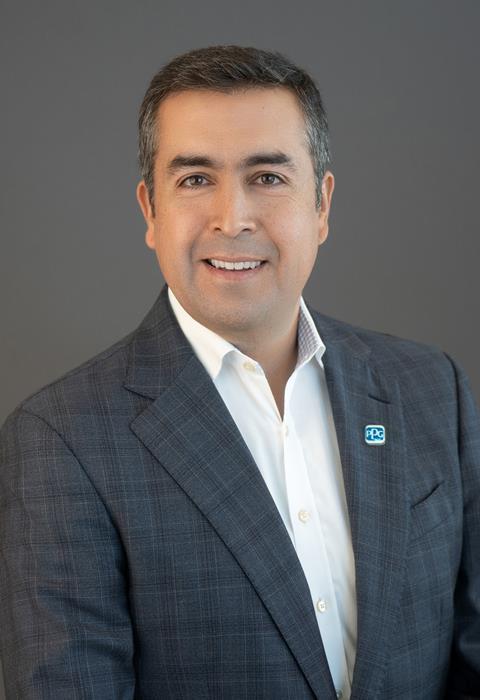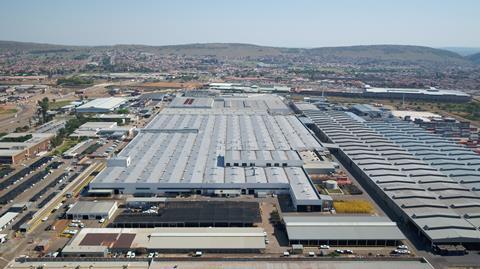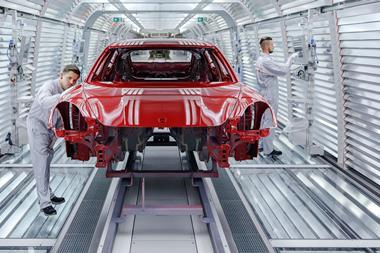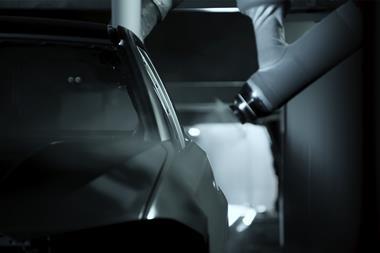A key element of a $1bn investment by Ford Motor Company to upgrade operations at its manufacturing plant at Silverton on the outskirts of the South African capital of Pretoria is a completely new e-coating facility for chassis frames
The facility will be used to coat the frames used in the next-generation Ford Ranger pick-up truck as an integral part of a strategy that aims to support an increase in production volumes at the plant from 168,000 to 200,000 vehicles a year. The 156,942sq.m plant has been operated by Ford since 1985, though it first went into operation in 1967, and currently employs some 5,500 people. Ford has, though, been operating in South Africa for 98 years and this particular investment programme is described as the largest the company has ever made in the country.
However, the new e-coating installation is not part of the main factory complex. It is co-located with the main plant at a site just outside the perimeter since it is not actually operated by the vehicle OEM. Instead, it was designed to Ford’s specification and is operated by the Coating Services division of US-based painting and coating specialist PPG and acts, in effect, as a Tier1 supplier to the manufacturing complex next door.

External management of the coating process
This form of business relationship between PPG and a vehicle maker is not unprecedented. There are currently around 80 installations at 34 different locations around the globe operating within such relationships. That figure is provided by Rodolfo Ramirez, global manager for coating services for PPG. But as Ramirez also makes clear, the operation at Silverton, which was commissioned in October last year as a continuation of an existing relationship between PPG and Ford at the plant, represents a current state-of-the-art for such installations particularly in its use of materials. “We have been supplying Silverton with services since 2018,” confirms Ramirez. “There was a dedicated line at Silverton previously and that former facility is still running but is not supplying the process anymore.” Instead, he says, the new facility is “a brand-new design that integrates all our previous experience.”
The installation takes in raw steel chassis frames produced either by Ford or a supplier and then subjects them to a series of three distinct, sequential processes. These are: cleaning and degreasing, phosphating and then e-coating, with the latter comprising an immersion procedure followed by a final oven-bake stage. The finished frames are then delivered to the adjacent plant ready to start their journey down the production line.
Ramirez says that at each of those stages the relevant process involves the use of the latest appropriate materials from PPG. The initial cleaning procedure, for instance, uses a liquid alkaline material specifically developed to support low-temperature cleaning operations.
Then the phosphating stage involves the use of a zinc phosphate substance that is compatible with both aluminium and steel substrates though in this application the treated workpieces are entirely of a steel composition. It is completed with a rinse procedure. The purpose of this second stage, notes Ramirez, is to provide a preliminary coating on the frames of “small phosphate particles that can provide adhesion for the e-coat.” Indeed, Ramirez reports that the subsequent e-coat process is “95-99% transfer efficient”.
Technical coatings provide the ‘edge’
The e-coating stage is where in technical terms the overall process arguably achieves its highest level of sophistication. As Ramirez confirms, the material involved at this stage is Powercron 6200 HE, which he describes as “the latest global platform from PPG” for e-coating applications. In technical terms the material, which has been on the market for just over two years is a “cationic epoxy e-coat”. But, as he further describes the product, it becomes evident that the important aspect of the material’s capabilities is contained in the last two letters of its formal title where the ‘HE’ stands for ‘high edge’.
What this short suffix denotes, says Ramirez, is that the material has been developed to ensure that the thickness of an applied coating at an edge, in other words at the point where two surfaces meet, is the same over all surfaces. In contrast, he continues, “in previous technologies those edges were covered but at a lower rate.” But now, he states, “the thickness of the coating at the edges is the same as on the flat surfaces.”
In commercial terms from the OEM’s point-of-view Ramirez says that this fact of technical performance does have real implications for on-road use and the avoidance of possible post-sales financial penalties. “It enables warranties for corrosion protection to meet today’s market expectations and the specifications required to achieve them,” he states. As such, he continues, “use of the material is now widespread.”
Reducing energy consumption
But the material also provides some significant in-process benefits. Specifically, it permits a lower bake temperature in the energy-intensive ovens that complete the whole process. This can be 15-20°C lower than with previous materials. Given that the bake process is not a ‘flash’ procedure but one that requires an extended duration of around 35 minutes before the coated frames are ready for despatch, the savings involved are notable. In fact, the relevant figure for each of the oven’s three burners is a reduction in liquid petroleum gas (LPG) consumption from 36kg/h to just half that at 18kg/h. VOC emissions are therefore also reduced accordingly.
Indeed, given the emphasis on achieving increasingly stringent targets for continuous improvement in environmental performance that now permeates all aspects of manufacturing, Ramirez says that helping facilitate this is a specific objective of all PPG’s product development programmes. “Every time we develop a new process, we want to provide extra benefits for instance in terms of environmental or energy efficiencies,” he states.

More automation in the process
In physical terms, the major attribute of the Silverton installation that Ramirez pinpoints is its high level of automation. The frames go through the whole process from delivery to despatch as stacked batches, not singly, and this obviously requires a robust material handling capability. He says this is provided by a system of robotic hoists which in turn means that the human staffing of the facility is comparatively minimal in terms of numbers, though relatively high in terms of required skills levels.
“There are only a little over 30 members of staff in the facility and they are overwhelmingly at either technician or engineer level,” Ramirez states. All the staff are employees of PPG, which takes full responsibility for recruitment and training. “This allows OEMs to focus on their own core competences and takes needless complexity away from them,” he adds. “It is a trend we see increasingly.”
It is also one in which PPG offers clients a choice of exactly how they might look to achieve this objective. In addition to the option of the company operating a dedicated but autonomous facility such as that at Silverton, PPG also offers two other options. One is to process the parts in one of its own globally distributed regional coating centres. The other is to manage and run a client’s existing in-house facility.






































No comments yet